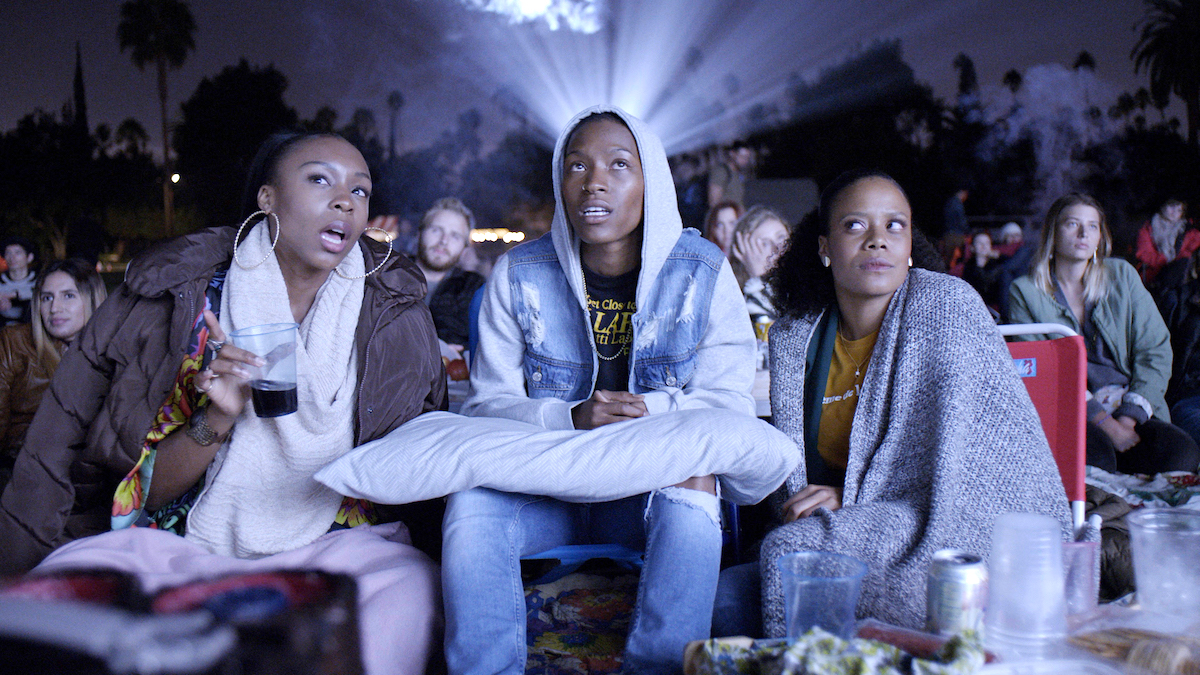Local 600 Director of Photography Michelle Lawler, and her close-knit Guild camera team, help Lena Waithe create a new cinematic iconography in BET’s Twenties.
by Margot Lester / Photos by Ron Jaffe / Screengrabs Courtesy of BET
Lena Waithe is no stranger to breaking ground. The actor, writer and creator was the first Black woman to win an Emmy – for Outstanding Writing for a Comedy Series – for the “Thanksgiving” episode of Master of None. Her latest venture, Twenties, is the first primetime vehicle to feature a masculine-of-center Black woman and the first BET show led by an LGBTQ+ character. As Justin Tipping, one of the show’s executive producers and director of four Season 1 episodes, explains, “Twenties creates unprecedented space on television for a generation of young queer Black women to see themselves on screen as protagonists with agency in their own narratives, while exploring universal themes within its specificity. The story does not fetishize Black pain and trauma – instead, it revolves around Hattie and her two straight Black girlfriends as they navigate love and friendship in the land of dreams.” Tipping, who was a 2020 NAACP Image Award nominee for Outstanding Directing in a Comedy Series (Showtime’s Black Monday), had previously worked with Waithe on Showtime’s The Chi.
And while Twenties’ plot may sound familiar, its execution challenges longstanding Hollywood convention. The show stars Jonica T. Gibbs as Hattie, who aspires to be a screenwriter; Christina Elmore as Marie, a studio executive; and Gabrielle Graham as Nia, a former child actor who’s now a yoga instructor. “By showing Hattie and her two Black female friends exploring the messiness of finding themselves in their 20s as they all struggle to ‘make it’ in spaces in which they often feel they don’t belong,” Tipping adds, “and allowing them to show the gamut of the human condition in all its forms, the show pushes the normalcy of these images and representation into the mainstream, so we can work to redefine the status quo of majority culture to be more inclusive.”
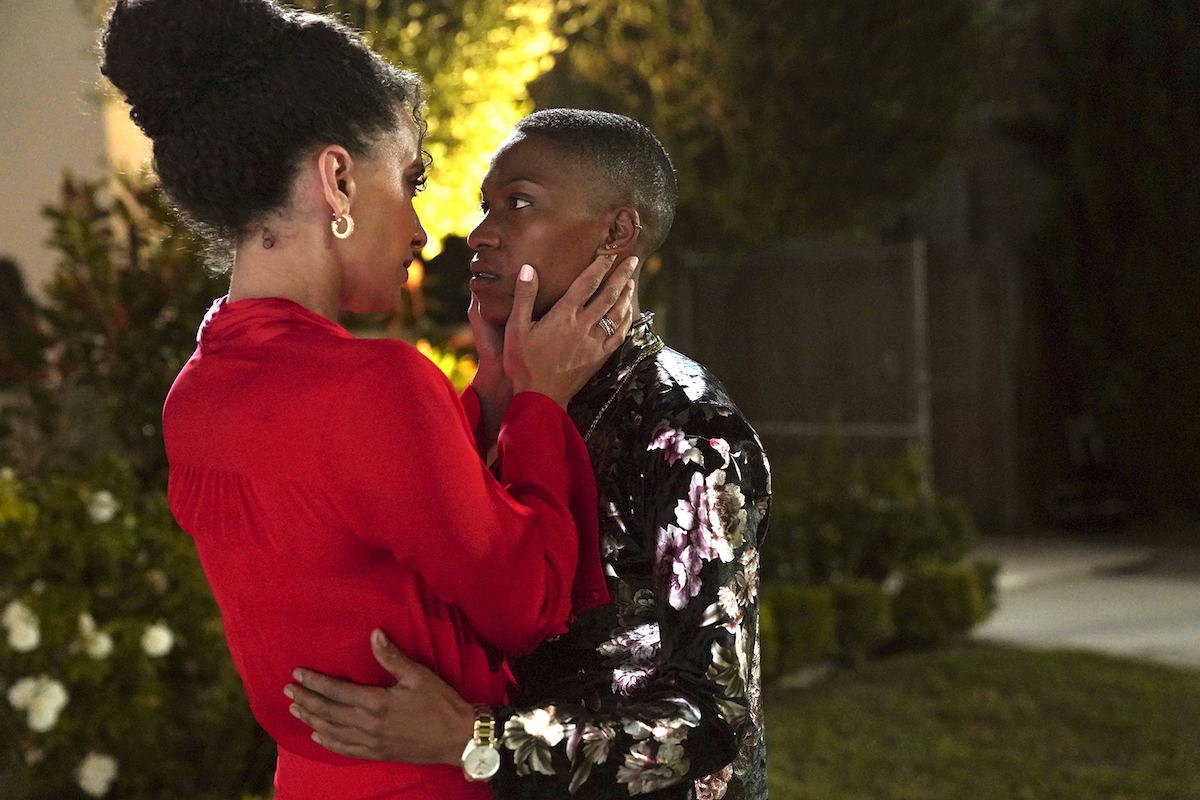
Local 600 Director of Photography Michelle Lawler, who worked on Season 1 of Waithe’s BET series Boomerang, says that although the show is entirely location-based, they shot four-and-a-half days per episode. “You can easily get bogged-down with just getting coverage and making the day with that type of schedule,” she observes. “But Lena inspires you to elevate your game. She’s always asking: ‘How can we move the camera?’ and ‘How can we do this differently?’ and ‘How can we visually convey what’s happening for this character emotionally?’ For me, that’s the fun part, pushing past the automatic default and going deeper. And there were a lot of opportunities on this show to do that.” Adds A-Camera/Steadicam Operator Michael Wilson: “Lena’s approach is a great way to flex your creativity, collaboration and communication. You’re opened up to much more than typical TV blocking.”
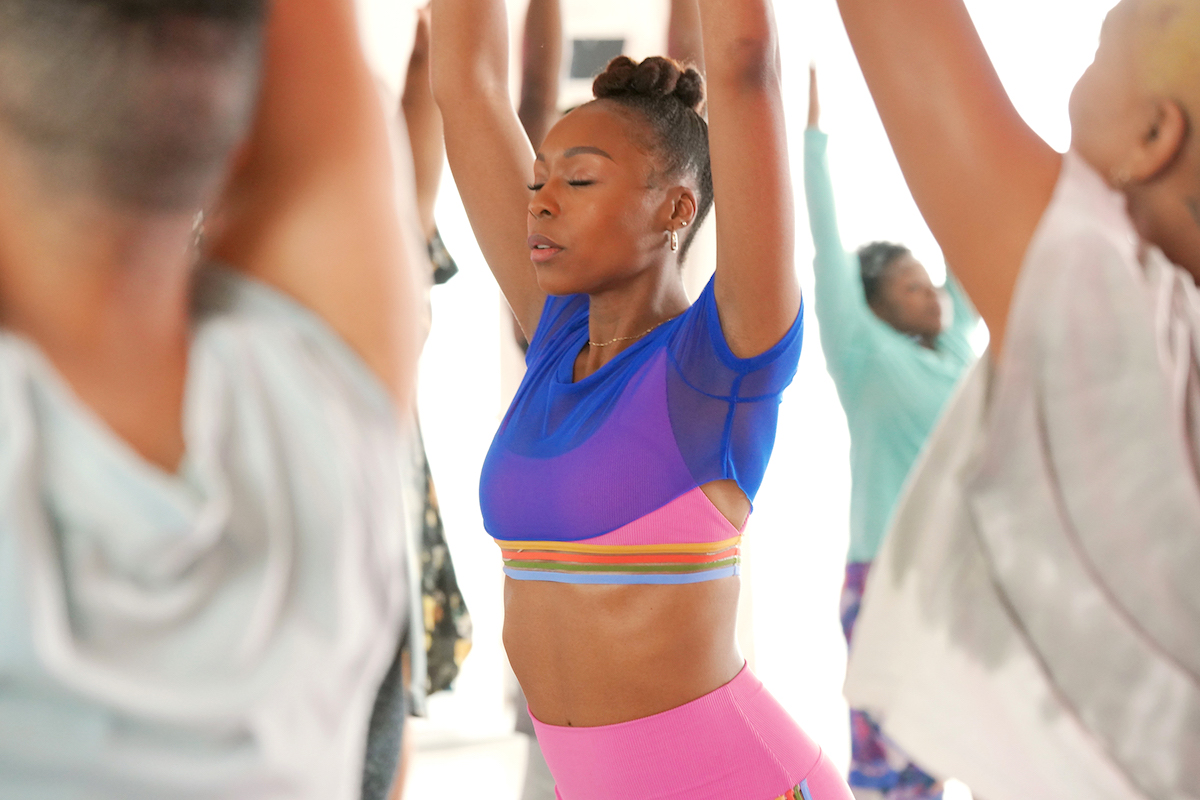
Twenties was shot on an ARRI LF with ARRI Signature Primes and Rota-Polas for skin tones. Guild 1st AC Jacqueline Stahl says, “The Rota-Polas, which Michelle and I got from [Local 600 Director of Photography] Ava Berkofsky when we were all working together on Insecure, helps smooth out and brighten darker skin tones, which absorb more light. It adds a special unique glow to the skin.”
Stahl notes there was a group effort by Twenties’ AC team, led by “B-Camera 1st AC Scott Johnson and B-Camera 2nd AC Nick Nikides, who, Stahl explains, “set up a motor on the Pola that could work with the single-channel Preston. By using the auxiliary port on the Preston, we were able to hook-up a separate motor through a single channel for Michelle and [DIT] Peter Brunet to have full control of where and how to adjust the Pola without stopping the flow of the set. This way they didn’t have to ask someone to stop what they’re doing to adjust; they can just do it quietly from the DIT control station.” Having Michelle dial [the Pola look] in at the DIT tent was a great add by our AC team,” adds B-Camera Operator Shelly Gurzi, SOC.
DIT Peter Brunet’s setup included an upright Deploy cart with a 25-inch Sony OLED monitor running Pomfort, Livegrade and Silverstack. “Wireless video is so critical, especially on a show that is mostly location-based and has high page counts every day,” Stahl continues. “We used Teradek Bolt 3000 for each camera. Not having to run cables every time we move simplifies the shooting process. It helps my team and me stay more attentive to Michelle’s needs for setting up the shot while maintaining the video signal for everyone else.” A wireless Preston FIZ and Light Ranger system allowed Stahl to safely give the camera and operator space with the actors without getting in the way.
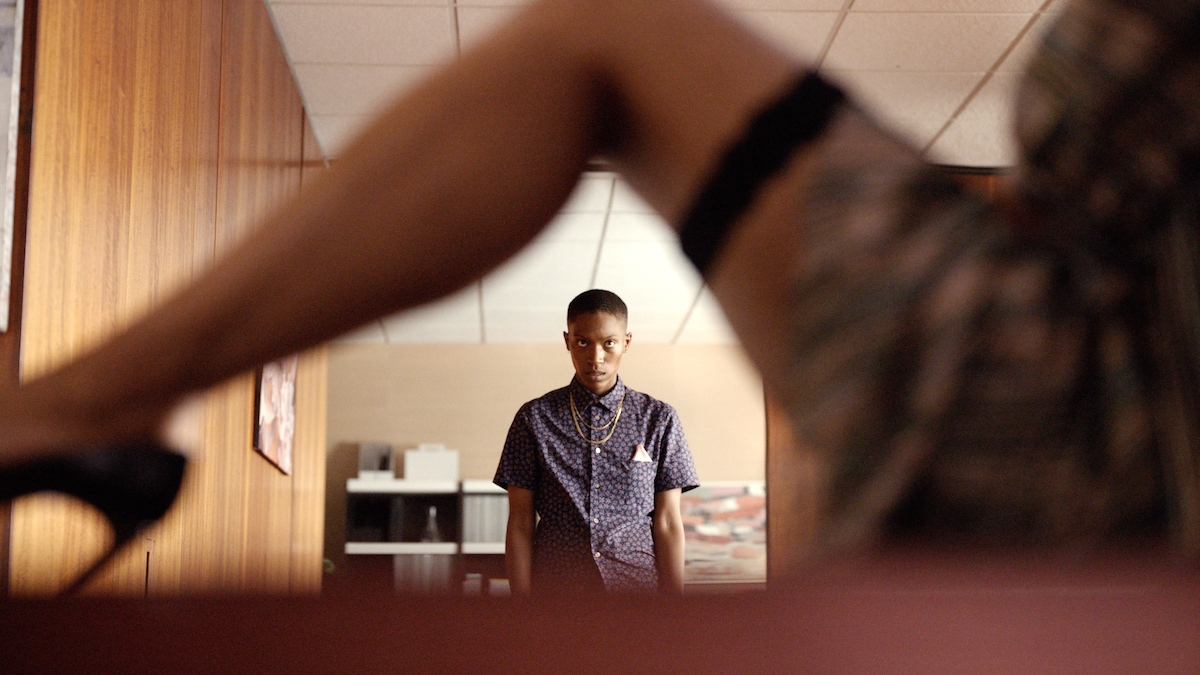
Waithe’s script heavily influenced the look of the show. In the pilot, the three friends go to see All About Eve at Cinespia (inside the Hollywood Forever Cemetery). The scene features a clip of Margo Channing (Bette Davis) talking about being a woman in Hollywood. “That moment sets up the show’s aesthetic,” explains Lawler, whose award-winning résumé includes the indie feature Wildness (Outfest Grand Jury Award) and Rust Creek. “We wanted to recreate the opulence of old Hollywood movies but with Black women at the center. We wanted to create frames where they could take up space in the rooms they occupied.”
Tipping took additional inspiration from The Big Lebowski and Punch Drunk Love, “both off-beat dramedies set in L.A. with these intentional flourishes of style that brought out a more whimsical or magical realism while still being grounded,” he notes.
There are more literal nods to iconic films, notes Production Designer Sammi Wallschlaeger. “We gently remind the viewer that for over a century, cis-gender straight white males have dominated film and television, and this is a new time for new faces and voices,” Wallschlaeger shares.
One example of this occurs in Episode 2, directed by Tiffany Johnson, when Hattie gets her studio security badge. She leaves the building, puts on her headphones and we hear Frank Sinatra crooning, “I’ve Got the World on a String.” The music swells, and we are swept into a musical number shot as a “oner,” with Wilson on Steadicam. Hattie dances down the lot, interacting with extras and executing a spin around a lamppost reminiscent of Gene Kelly’s legendary turn from Singin’ in the Rain.
Careful viewing also yields a victorious running moment as in the iconic Rocky, and a museum moment reminiscent of Ferris Bueller’s Day Off. In the Season 1 finale, a dream sequence features Hattie and her boss, Ida B (Sophia Brown), recreating a moment from The Graduate. “If you get the reference, that’s great,” Tipping says. “And, if not, it’s a new reference point for iconography that would typically be a white cis-hetero male being seduced by an older white woman, now associated with a masculine-presenting Black lesbian being seduced by a queer Black woman. It’s a remix.”
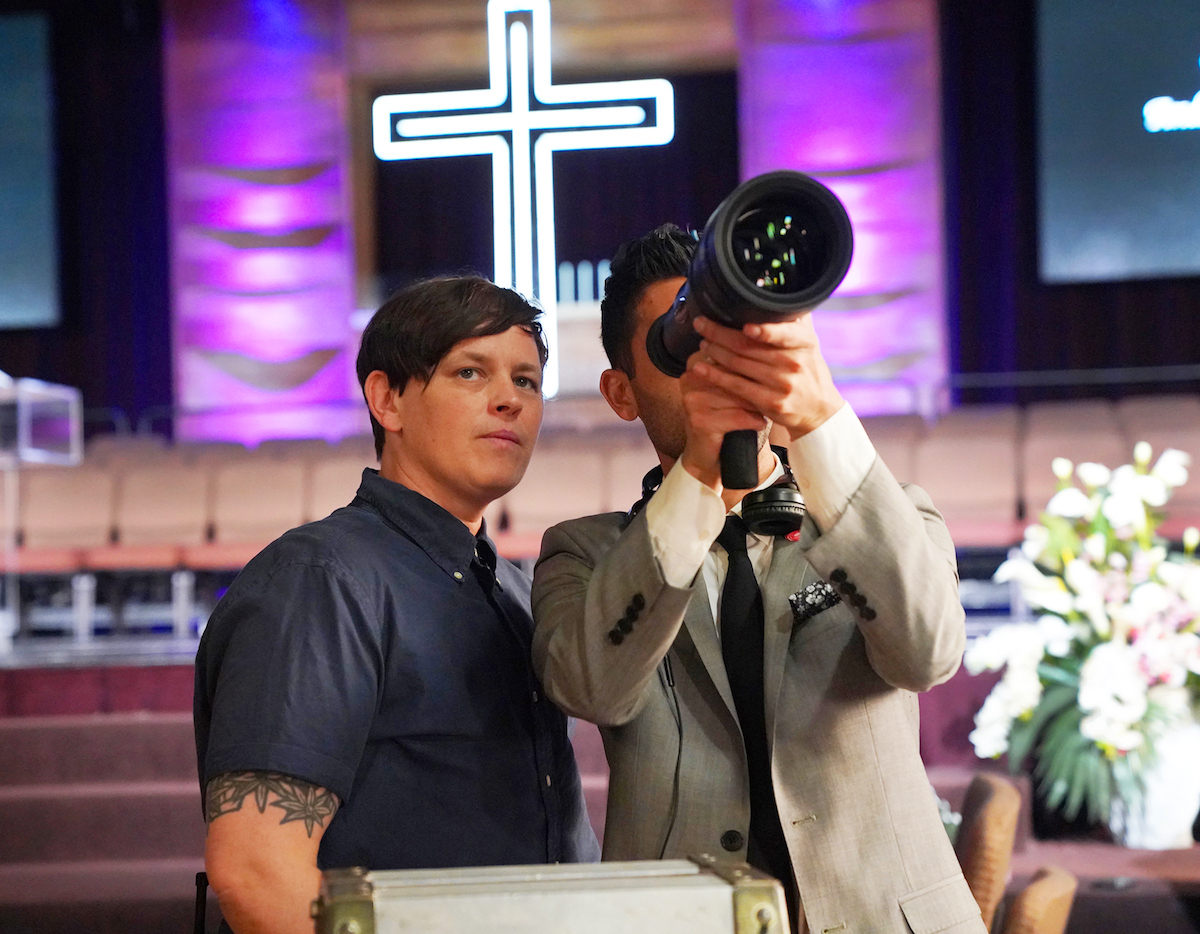
Twenties has a little bit of everything, including a stunt-driving sequence. In Episode 6, Nia and Hattie are cruising down the road when Ida B calls with an urgent request for Hattie to return to the office. Nia hits the emergency brake and pulls a u-turn in traffic. “I thought it would be hilarious if we made it a massive action sequence for no reason other than to get some laughs,” Tipping reveals. Captured at the end of the day in about 45 minutes, Lawler says, “We started on the process trailer for about five pages of dialogue, then moved to an exterior MovieBird crane shot of the car doing a 180 on a country highway with five stunt cars and drivers, who had some delicate stunt choreography.”
“We were on a crane,” Gurzi elaborates, “with Michael on the pan and tilt and me on the horizon. We started with the car upside down in the frame, and by the time the car made its u-turn, it’s under the crane. I had to land the horizon at the same time, which was thrilling.”
The shot was nailed on the second take, with the sequence then moving down the street to the second car body, which grips had pre-rigged with a hood mount and backseat camera. A stunt cam had been placed safely in the road. Nia and Hattie’s reactions were shot separately at 300 fps, Tipping says, “to give the illusion of our girls spinning out like they were in The Fast and The Furious: Tokyo Drift. They were really on go-jacks moving as fast as the grips could spin the car in a parking lot. The higher the frame rate, the less aware you are of how fast the car is spinning. You focus on the reactions of the actors, which are hilarious.”
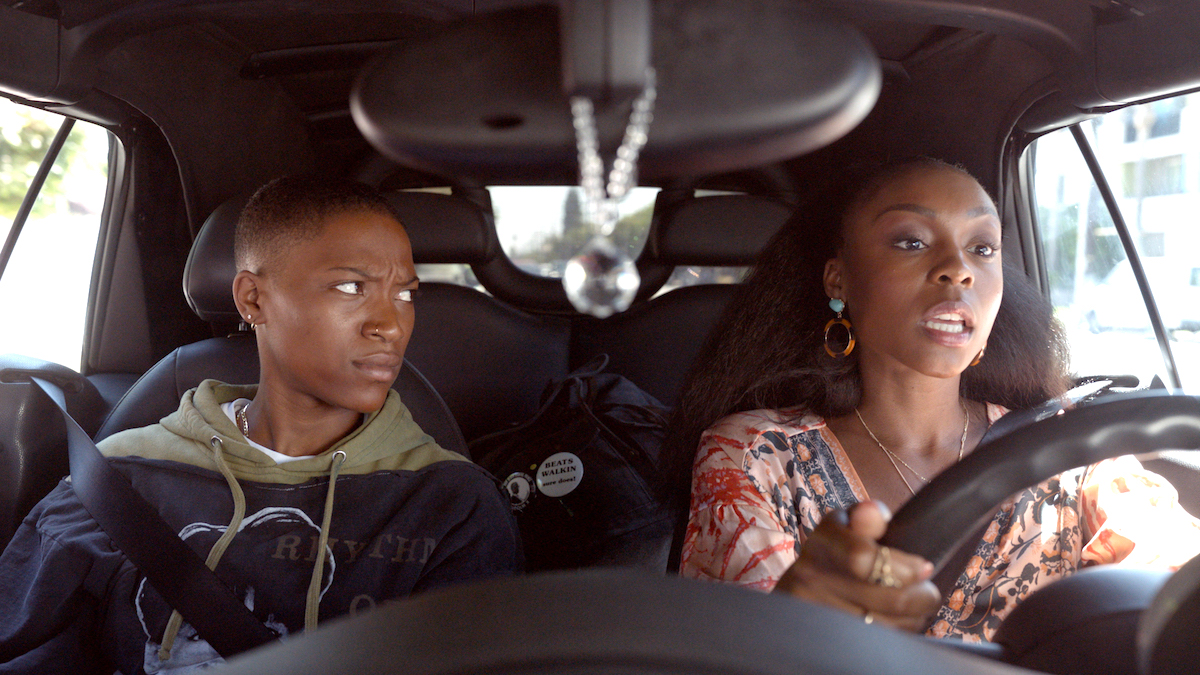
Like its characters, Twenties is big and bold. As Wallschlaeger describes: “We did not shy away from patterns, color and visual stimuli. I kept coming to [the producers] with ideas that some might find too outlandish, too bright and colorful, or too much pattern, and I’d be like, ‘Pretty much the entire space is pink and there’s this wallpaper that I like, what do you think?’ and they would say, ‘Go for it!’ Pink and blue feature prominently throughout, connecting gender stereotypes of masculinity versus femininity.”
Cinematic techniques added to the impact. Tipping describes doing “extreme dolly moves, or flying in on the Steadicam, and using time speed ramps, almost like pump-fakes in basketball,” he shares. “That’s kind of how I described it to Lena when pitching. A pump-fake that sets up the audience for something monumental, and it’s just Hattie reading a book. We’d lean into an exaggerated move knowing we were using a sweeping ‘Hollywood’ score mixed with contemporary hip-hop and nostalgic tracks, like Whitney.”
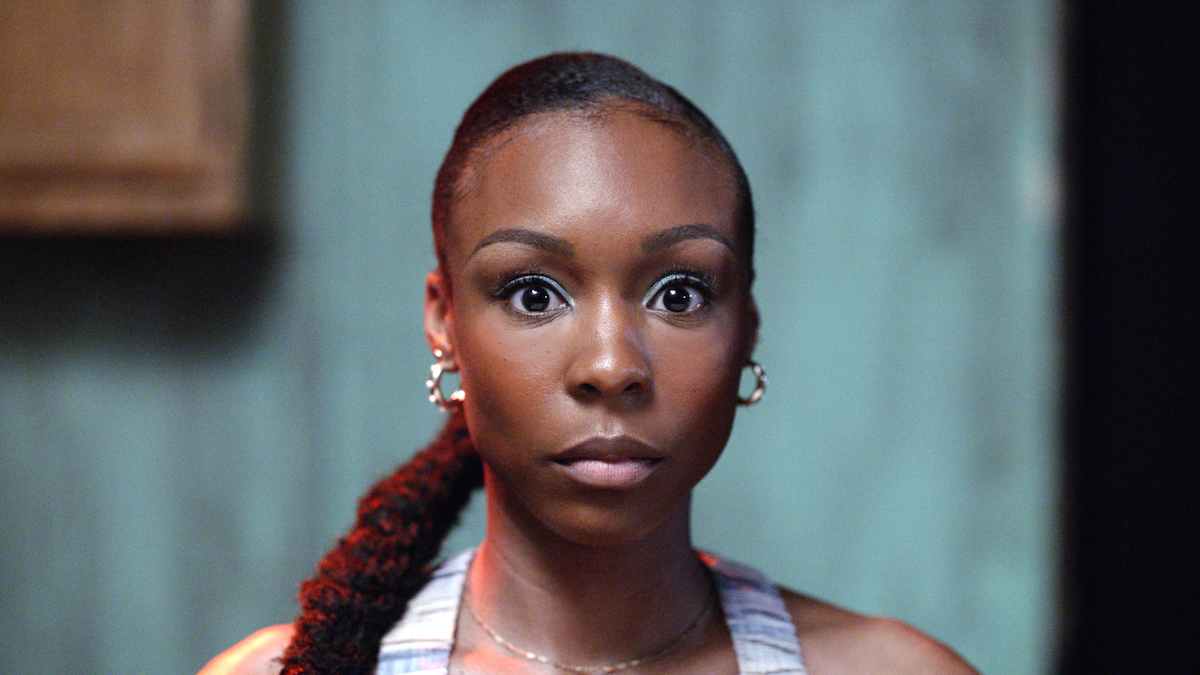
Lawler says the unmotivated camera moves bring a certain melodrama. “They heighten the experience the character is having,” she notes. “Justin loves to quickly push into a character’s face for an emotional flourish, which visually elevates the comedy. I was raised on motivated camera movement, so it was fun for me to break out of that and do a snap push-in on an emotional beat.”
Quick push-ins bring the audience into the moment with the characters, as in Episode 7, when Marie finds out that her nemesis, Ben, got the promotion she wanted. The sequence begins with tight shots of the email delivering the news and then cuts to a medium-wide shot before quickly pushing into Marie for her reaction. “Since the camera is high, it’s as if the news is descending upon her, and when the camera lands in a medium close-up, Marie turns and says into the camera, ‘Ben got the promotion,’” Lawler recounts. “She’s telling the audience before she tells her boyfriend, who’s sitting right across from her! She’s confiding in us.”
Stahl says the non-traditional combinations kept her on her toes. “They force me to stay sharp, knowing what’s needed for each specific camera package,” she says. “At prep, I like to build one cohesive build for all the possible camera scenarios. This helps my crew and me be more efficient, smooth, and, most of the time, unnoticed.”
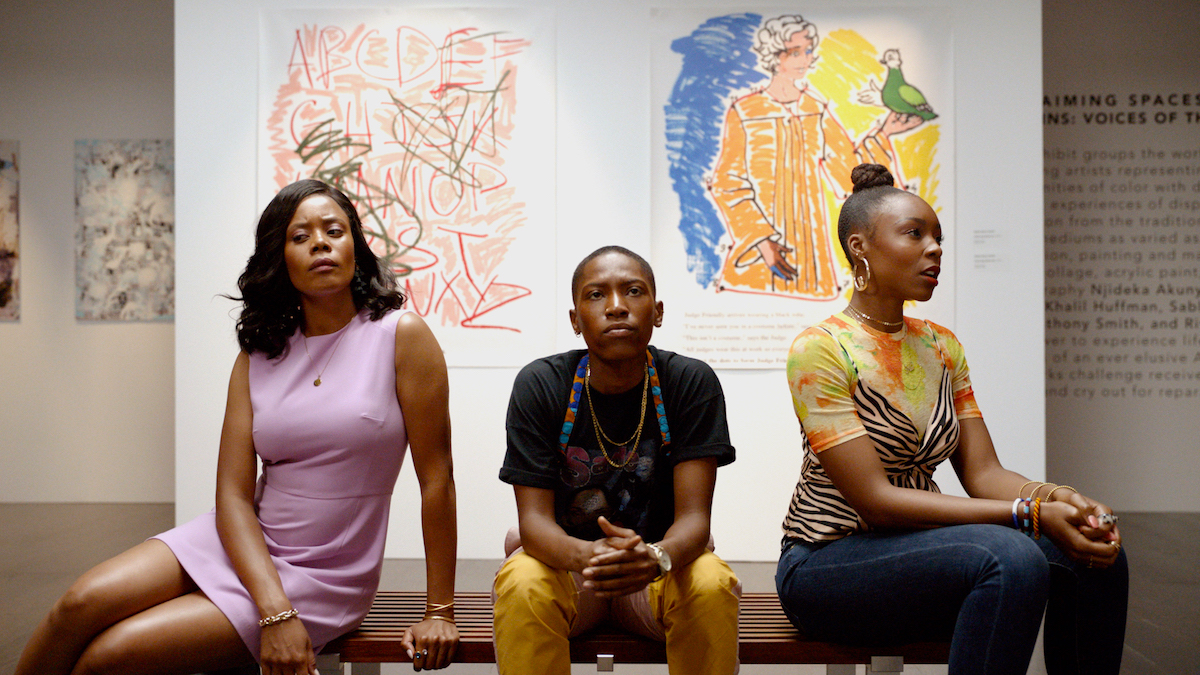
As befitting any Hollywood romance, Los Angeles is portrayed as another character, with lilting establishing and interstitial shots of the city scattered throughout. “Anytime we were away from the Paramount backlot or Ida B’s mansion,” Tipping relates, “we tried to stick to the Hollywood we knew in our 20s, around Cinespia and improv clubs on Santa Monica Boulevard. Marie and Chuck’s characters also led us organically to shooting a lot in and around West Adams.”
Extensive use of practical locations added texture and character. Lawler, Tipping and Wallschlaeger – who all met at AFI – spent hours in a van scouting coffee shops, apartment exteriors and other locales. They’d imagine where certain scenes could be and how they’d play out. Lawler did lighting tests with different paint colors and fabrics to see how they would read on camera. One of the last locations finalized was Ida B’s You Go Girl production offices, where Hattie works. Unable to find a suitable space, the team decided to use Tipping’s actual offices in Sherman Oaks, which Wallschlaeger describes as aesthetically challenging. “We brought in all new carpet, painted, wallpapered, built a wall, added drapes and shades, frosted windows, moved in all new furniture and office dressing. It was fully transformed from this dingy space into the candy-colored home of Hattie’s new dream job. When she walks into You Go Girl for the first time, you can feel that it is a special place with lots of energy and movement.”
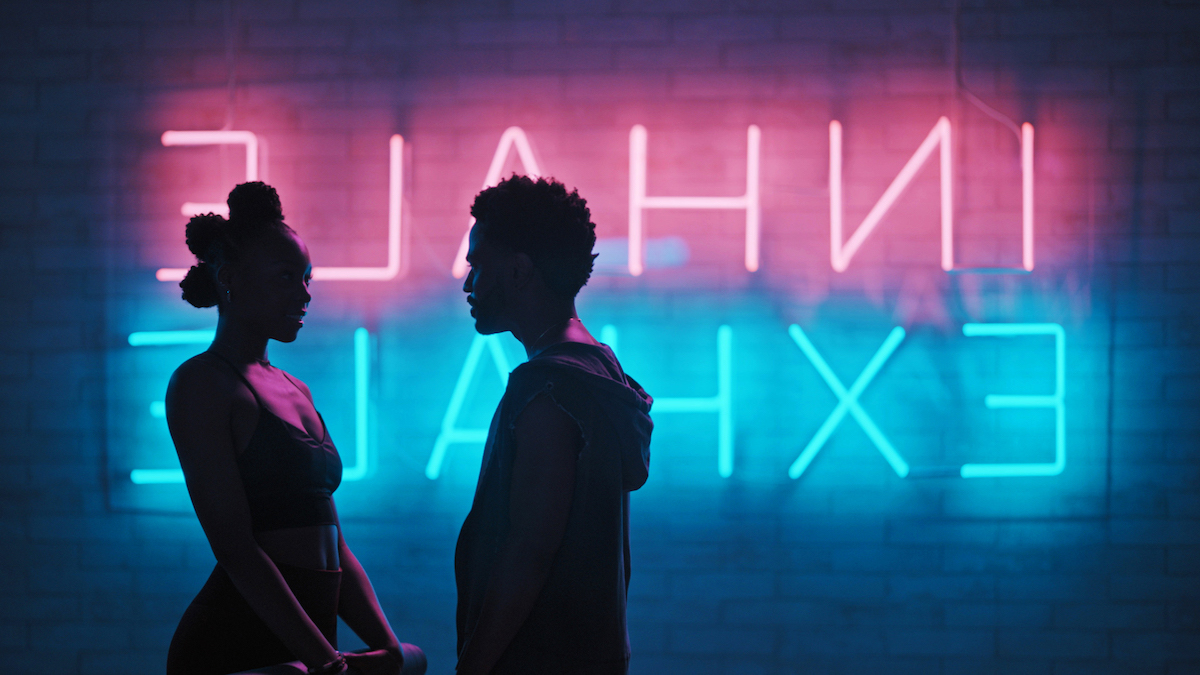
Such creativity came freely to Twenties, with many crew members already familiar with each other from AFI or working on Issa Rae’s award-winning Insecure for HBO. (Lawler shot five episodes in Season 4.) The shorthand enabled the Twenties team to make their ambitious days.
“There was a built-in familiarity in on-set work ethic, plus, we were already friends, and truly, there is nothing better than getting the opportunity to be on set and working in the world with friends,” Wallschlaeger concludes. Tipping agrees: “The stars seemed to align when we brought together the team to realize Lena’s vision. No matter what the schedule threw at us – time, budget, or whatever obstacle we were faced with during production – Michelle always knew the solution because she’s a master of story. Her craft is above reproach and her ability to keep a calm, safe space, despite what chaos was going on around us, definitely sets her apart.” Tipping says Lawler “invests in and nurtures” a sense of community, “and in this business, you need to find your people.”
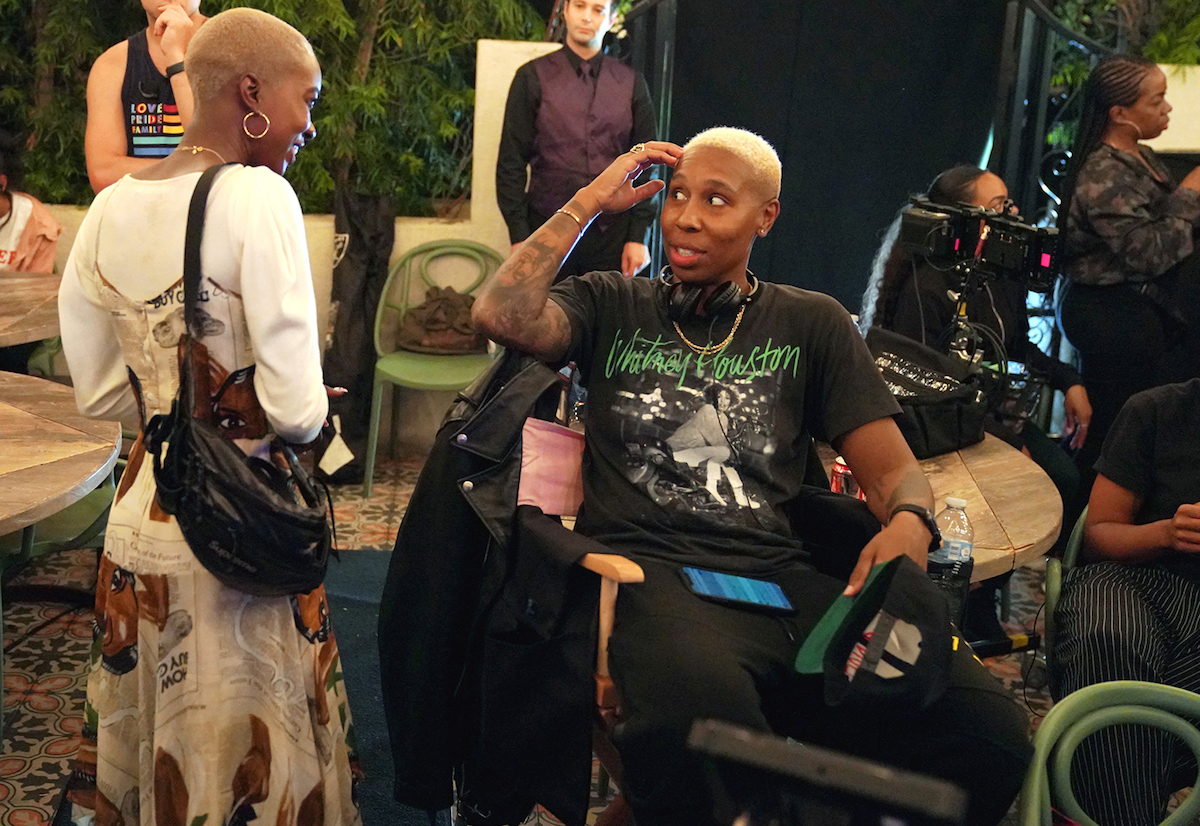
Twenties: Local 600 Camera Team
Director of Photography: Michelle Lawler
A-Camera Operator/Steadicam: Michael Wilson
B-Camera Operator: Shelly Gurzi
A-Camera 1st AC: Jacqueline Stahl
A-Camera 2nd AC: Rafiel Chait
B-Camera 1st AC’s: Gretchen Hatz and Scott Johnson
B-Camera 2nd AC: Nicholas “Nick” Nikides
DIT: Peter Brunet
Utility: Amanda Hamaday
Unit Still Photographer: Ron Jaffe
